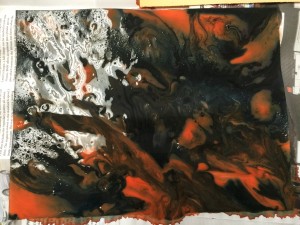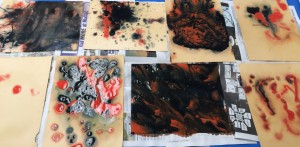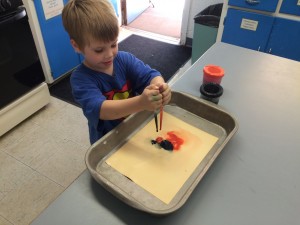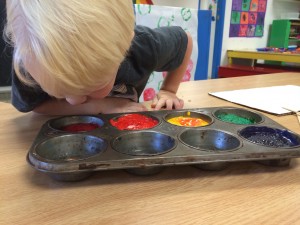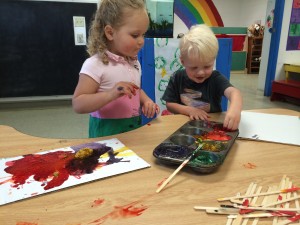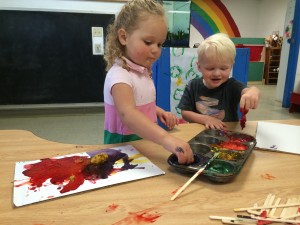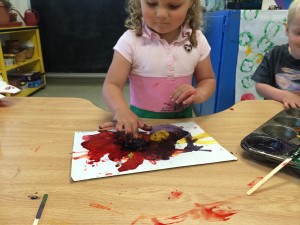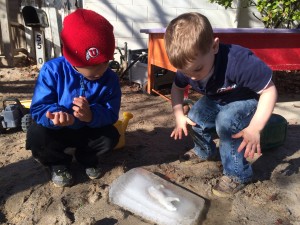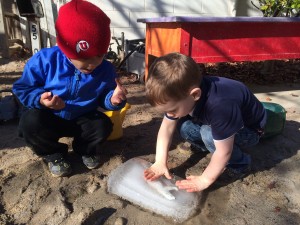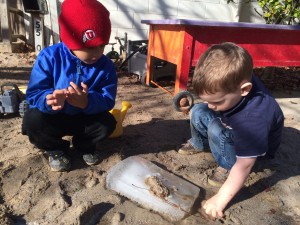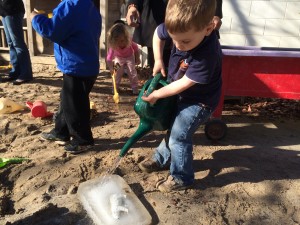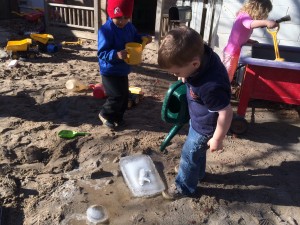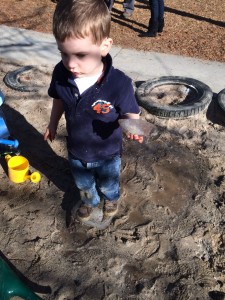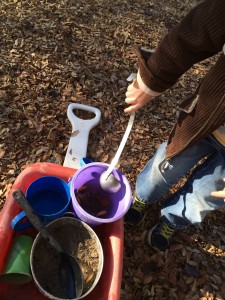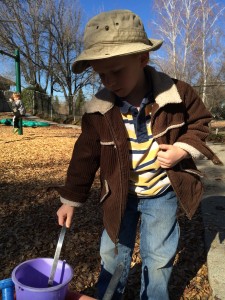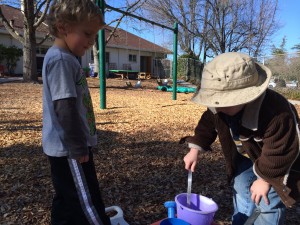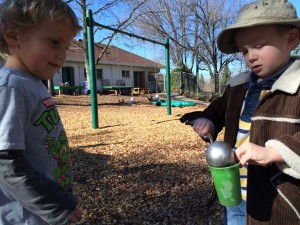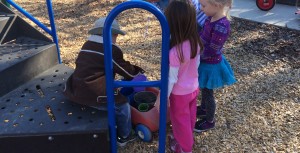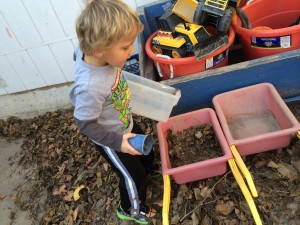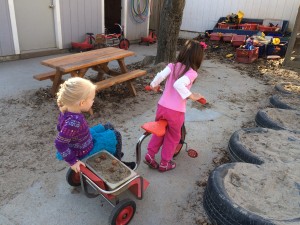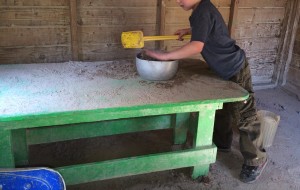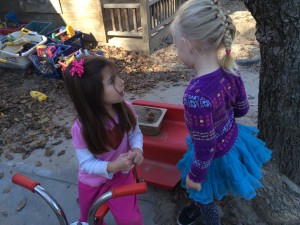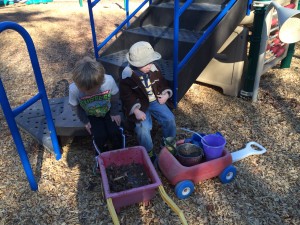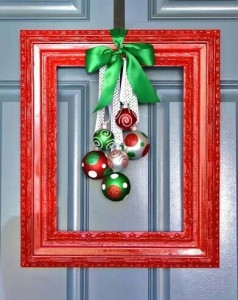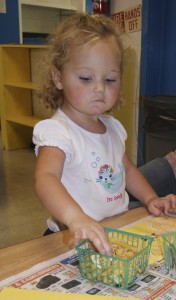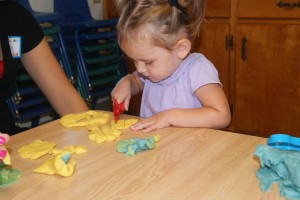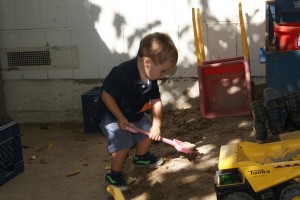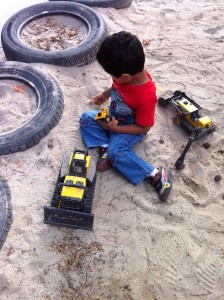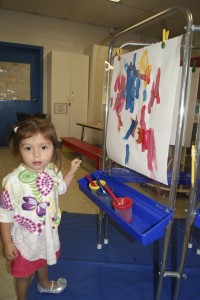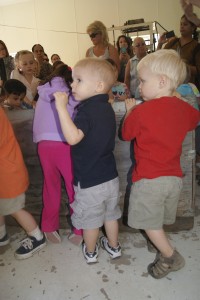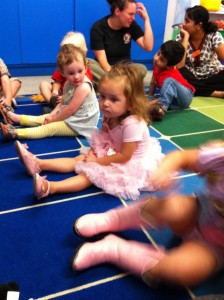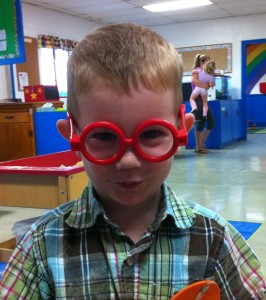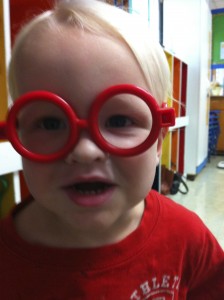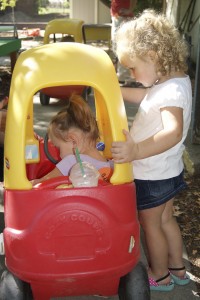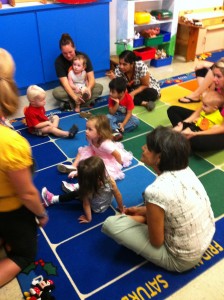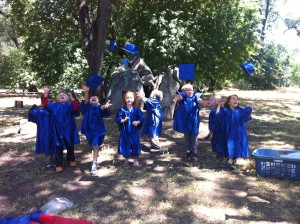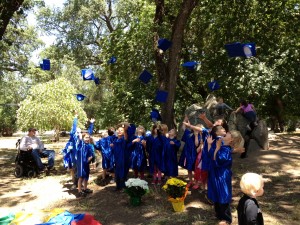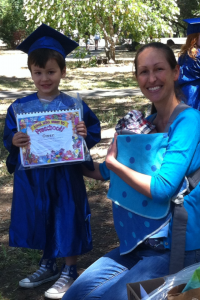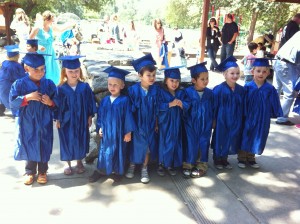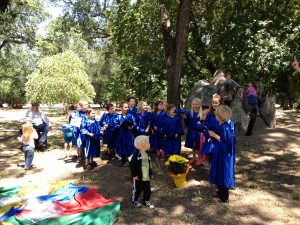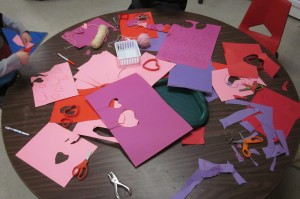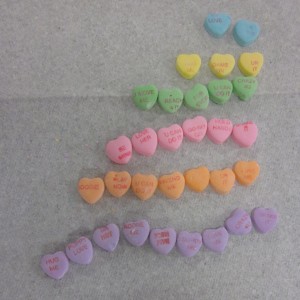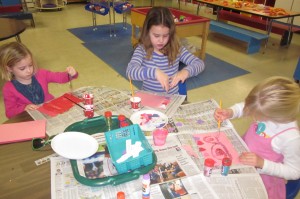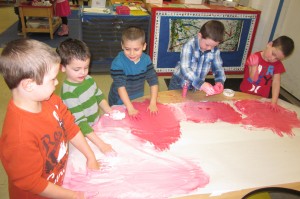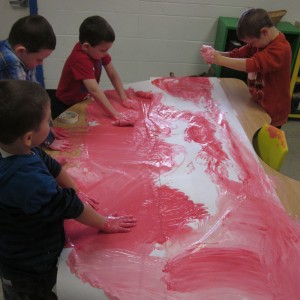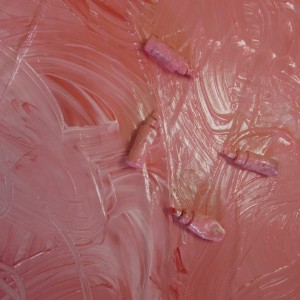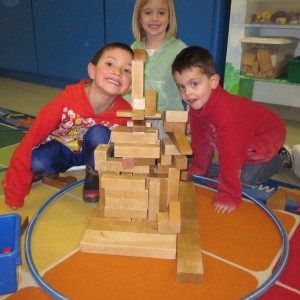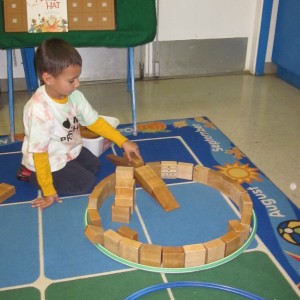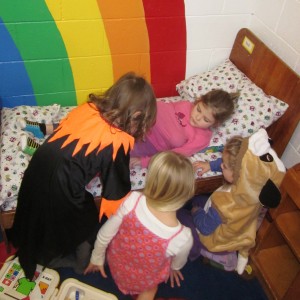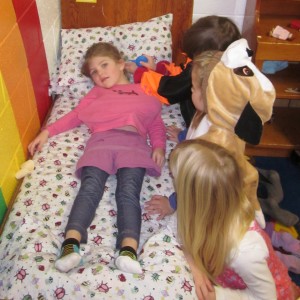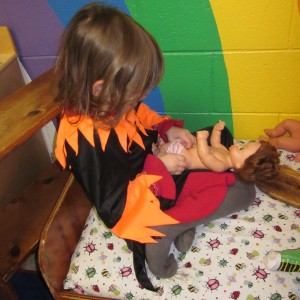In a previous post, I was thinking about the importance of seeing the world in news ways, from new perspectives, for both children and adults. As a teacher, I am always grateful for ideas and inspiration that will help make our classroom more dynamic and engaging. Here are some of the most recent results of my search for new ideas…
Magnet Wall
Thanks to the fundraising efforts of our families, we recently purchased a magnet wall set from the company Kodo Kids (http://www.kodokids.com/). They create an awesome array of high quality products that encourage open-ended, play-based exploration. One of our parents generously built the actual magnet wall for us–a piece of sheet metal backed with playwood, spray painted black, with a wooden frame. The magnet set we purchased includes ramps, rings (to hold funnels and cups), and small “walls” (that help control the path of materials as they move down the ramps). With this magnet wall system, children have the opportunity to explore and manipulate materials on a large, vertical space. So far, children have experimented with both balls and water (and then the two together)…
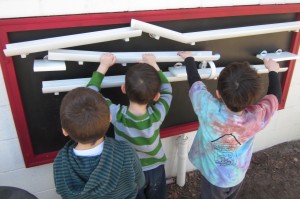
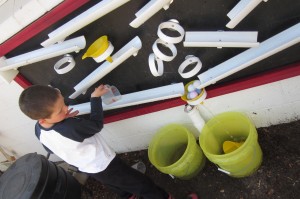
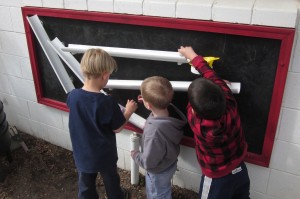
The first few times we explored with the mag wall, I set up a few ramps systems to get children started. But I love the fact that the children weren’t satisfied to stay with those set-ups for long, as they quickly discovered these moveable parts were meant to be manipulated again and again. I am so excited to have this new activity as a permanent fixture on our playground!
Sensory Table
While researching new ideas for our sensory table, I came across the blog of an early childhood educator, Tom Bedard (http://tomsensori.blogspot.com/2012/12/horizontal-channels-version-50.html). He has such creative ideas for augmenting the sensory table: rather than just changing out the contents of the table, he uses cardboard, PVC, and other materials to manipulate the space and shape of the table itself. Here was my first attempt to replicate his great ideas. I used a large cardboard box that sat on top of the table, with cardboard walls taped inside to create channels, and another large box attached to create a ramp.
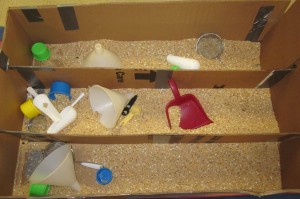
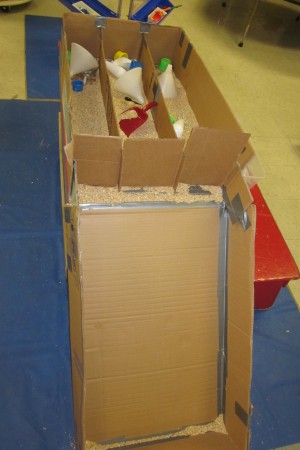
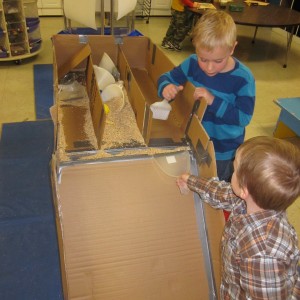
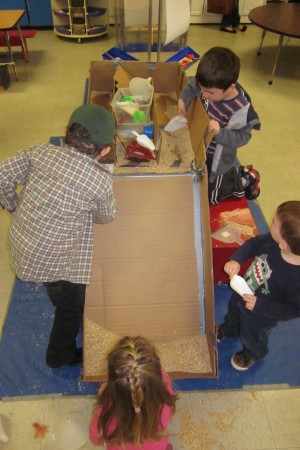
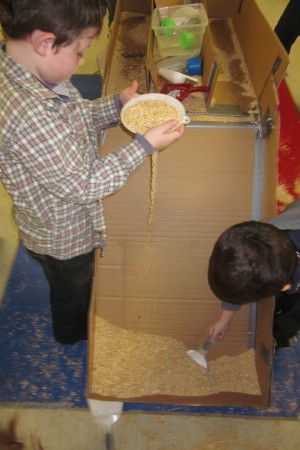
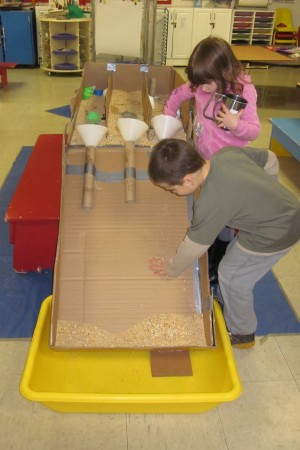
As the pictures show, the ramp was the most engaging aspect of this particular structure! Thank you, patient parents, for endlessly sweeping up birdseed scattered across the floor!
Children were also fascinated by a watercolor mixing station in the sensory table, which included cups of liquid watercolors, eye droppers, plastic tubes, funnels and clear plastic egg cartons. Just the simple change of adding two racks in the sensory tub, and a table next to the tub, invited children to explore the space in a new way.
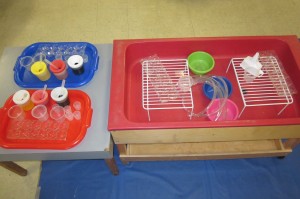
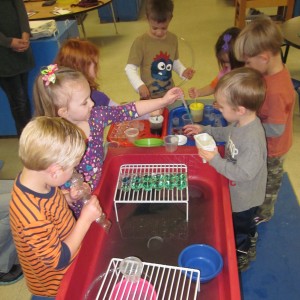
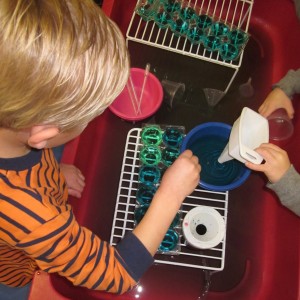
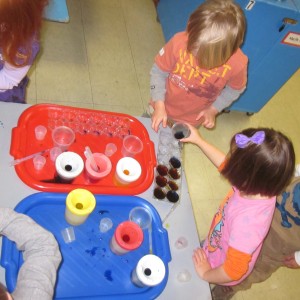
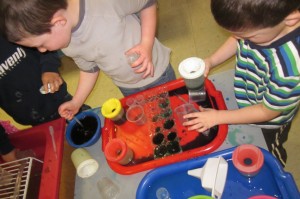
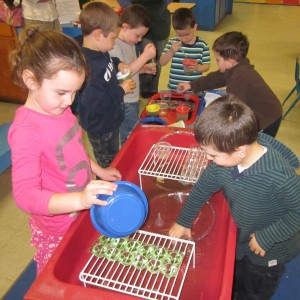
Loose parts
Pintrest proved to be very helpful in my search, allowing me to see a wealth of ideas in one place. (I am quite new to Pintrest, so these initial findings were very exciting and rewarding!) Adding “loose parts” to the block room area was a popular concept; and, again, I am so impressed by all the creativity of early childhood teachers out there, not to mention grateful that they are sharing their ideas! I tried out the addition of thin branches trimmed from a mulberry tree in my backyard, cut into about one foot in length, and cuttings from Teacher Sherry’s redwood tree. We started with the sticks and branches in the block room, which inspired a camping theme.
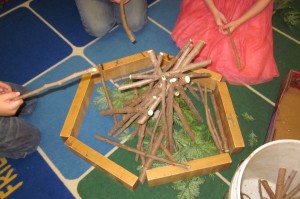
Once the campfire was built, children suddenly wanted to sing together. We’d read, sung and acted out “The Farmer in the Dell” at circle time, so the Block room parent opened the book back up and led the children in a singalong.
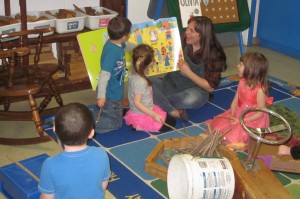
The camping theme morphed to include our plastic animal set and a fishing expedition.
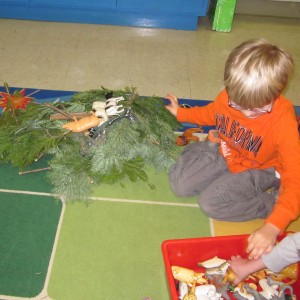
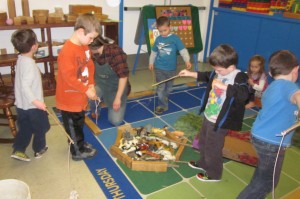
This particular activity proved to be a wonderful interplay between the children’s creativity and the attentive support of the working parent who responded to and encouraged their ideas. For the adults in a play-based classroom, it’s a delicate balance between giving children space to engage their own ideas, creativity, problem-solving, and intuition and stepping in to offer needed guidance and support. While children should indeed take the lead, the thoughtful support of attentive adults can guide children’s play to new levels of interest and engagement.
Pulleys & Pendulums
A book called More Than Magnets, by Sally Moomaw and Brenda Hieronymus, is to thank for a variety of activity ideas based on pulleys and pendulums.
Children first experimented with using the pulleys to transport cans full of small objects (small plastic bears, stones, cube blocks, etc). I appreciated how using the pulleys required teamwork and communication; as children became more familiar with the action of the pulleys, they were able to teach classmates just joining the activity. Children then started a game of collecting a piece of “treasure” every time they pulled the bucket back over to their side.
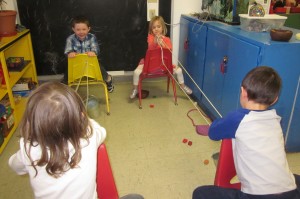
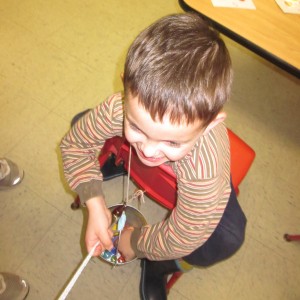
The next adventure with pulleys added the exciting and messy element of paint. I cut a plastic water bottle in half and filled a small squeeze bottle with watered down paint. The top of the squeeze bottle (mostly) stayed nestled in the narrow opening of the water bottle. I punched holes in the cut side of the water bottle and tied it to the pulley rope. As the children pulled the rope back and forth, it provided sufficient action to “shake” the paint from the squeeze bottles.
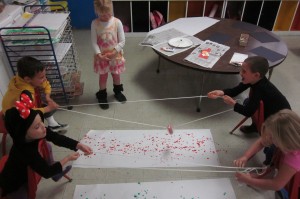
Children’s engagement with this activity included both quiet concentration on the action of the pulleys and giddy laughter at the satisfying splatter of paint!
As for the pendulum activity, we tried two variations with paint. Both variations utilized long PVC pipes mounted in concrete, with a rope strung between them, as the frame. In the first, paintbrushes were attached to string and hung from the rope; children could dip their brushes in paint and then swing the brushes back and forth. In the second (and much messier!) variation, I again used a water bottle cut in half; but instead of a squeeze bottle, I nestled a small funnel in the spout of the water bottle, and children could scoop slightly watered-down paint into the funnel before sending the pendulum for a ride.
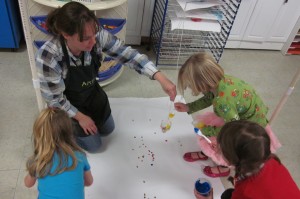
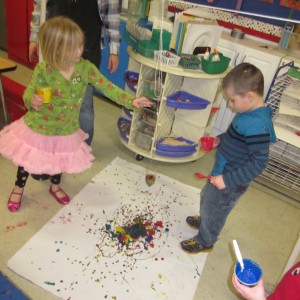
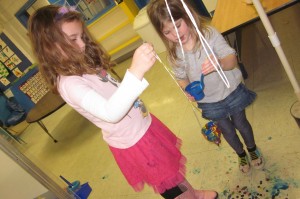
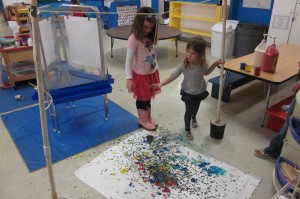
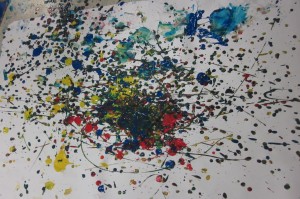
Needless to say, we needed a paper three times this size to contain the drips of paint!!
So that’s a little sampling of some of the new activities we tested out over the past few days and weeks. I am so grateful for the creative ideas educators are sharing in books and blogs. But most of all, I am so grateful to the parents of our school who support Teacher Sherry and me as we introduce these new, often messy, activities and implement them with energy, flexibility, and a great sense of humor. None of this fun would be possible without all of you! Thank you!!
